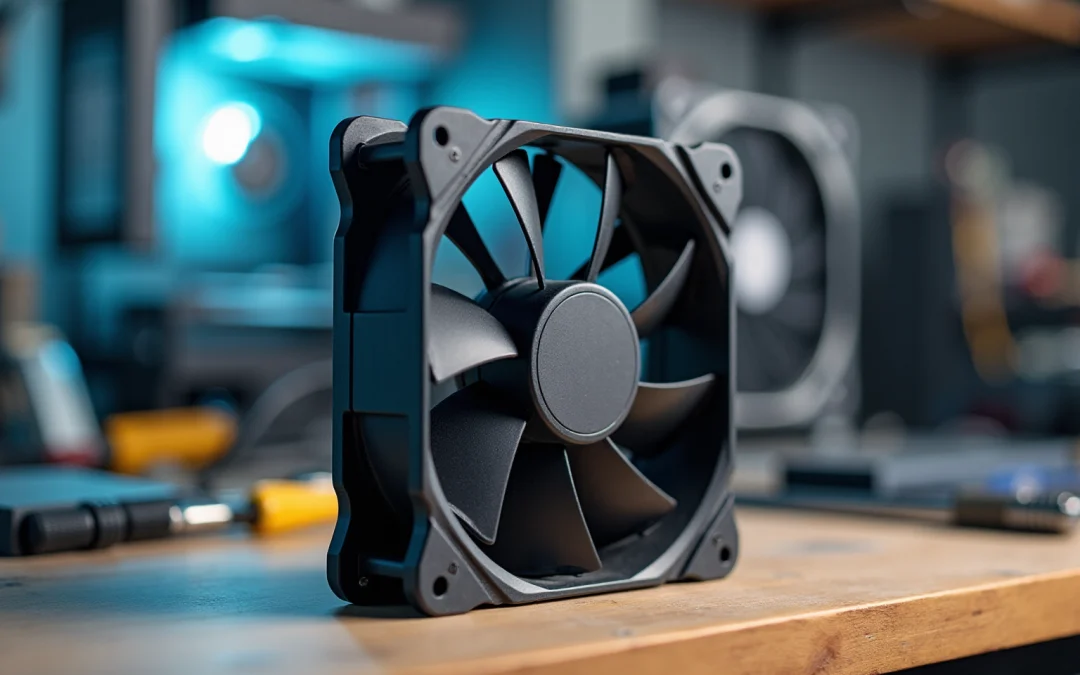Overview
This article delves into the critical features of waterproof computer fans that engineers must consider:
- Durability
- Energy efficiency
- Noise levels
- Ease of installation
It highlights the significance of IP68 ratings for protection against moisture and dust, illustrating how these ratings are essential for ensuring longevity and reliability in demanding environments. Furthermore, the discussion includes the role of customizable features in optimizing performance, underscoring the importance of tailoring solutions to specific applications. The necessity for dependable manufacturer support is also emphasized, as it plays a vital role in providing effective cooling solutions under challenging conditions. By understanding these key aspects, engineers can make informed decisions that enhance the performance and reliability of their cooling systems.
Introduction
The demand for waterproof computer fans is surging as engineers confront the challenges posed by moisture and dust, which jeopardize the performance and longevity of electronic equipment. Projections estimate that the waterproof fan market will reach $1.7 billion by 2033. Therefore, understanding the essential features of these cooling solutions is crucial.
What key attributes render a waterproof fan not merely functional, but indispensable in demanding environments? This article explores the ten essential features that every engineer should consider when selecting waterproof computer fans, ensuring optimal performance and reliability in their designs.
Gagner-Toomey Associates: Innovative Cooling Solutions for Waterproof Fans
Gagner-Toomey Associates excels in delivering advanced cooling solutions specifically tailored for the electronics sector, highlighting the importance of waterproof computer fans that are crucial for addressing the challenges posed by moisture and dust. These factors can significantly impact the functionality and lifespan of electronic equipment.
The market for waterproof ventilators is projected to experience substantial growth, with estimates reaching USD 1.7 billion by 2033, reflecting a compound annual growth rate (CAGR) of 9.3% from 2026 to 2033. This expansion is fueled by the increasing demand for reliable refrigeration solutions across various applications, including outdoor electronics and industrial machinery.
Recent advancements in waterproof computer fan technology have resulted in models that boast enhanced durability and efficiency, such as those featuring dual ball bearing construction and high airflow ratings. Industry leaders underscore the importance of waterproof computer fans, emphasizing their critical role in maintaining optimal operating temperatures and preventing overheating in challenging environments.
As the electronics industry continues to evolve, Gagner-Toomey Associates remains steadfast in empowering engineers with innovative products and exceptional customer support, ensuring reliability and efficiency in their cooling systems.
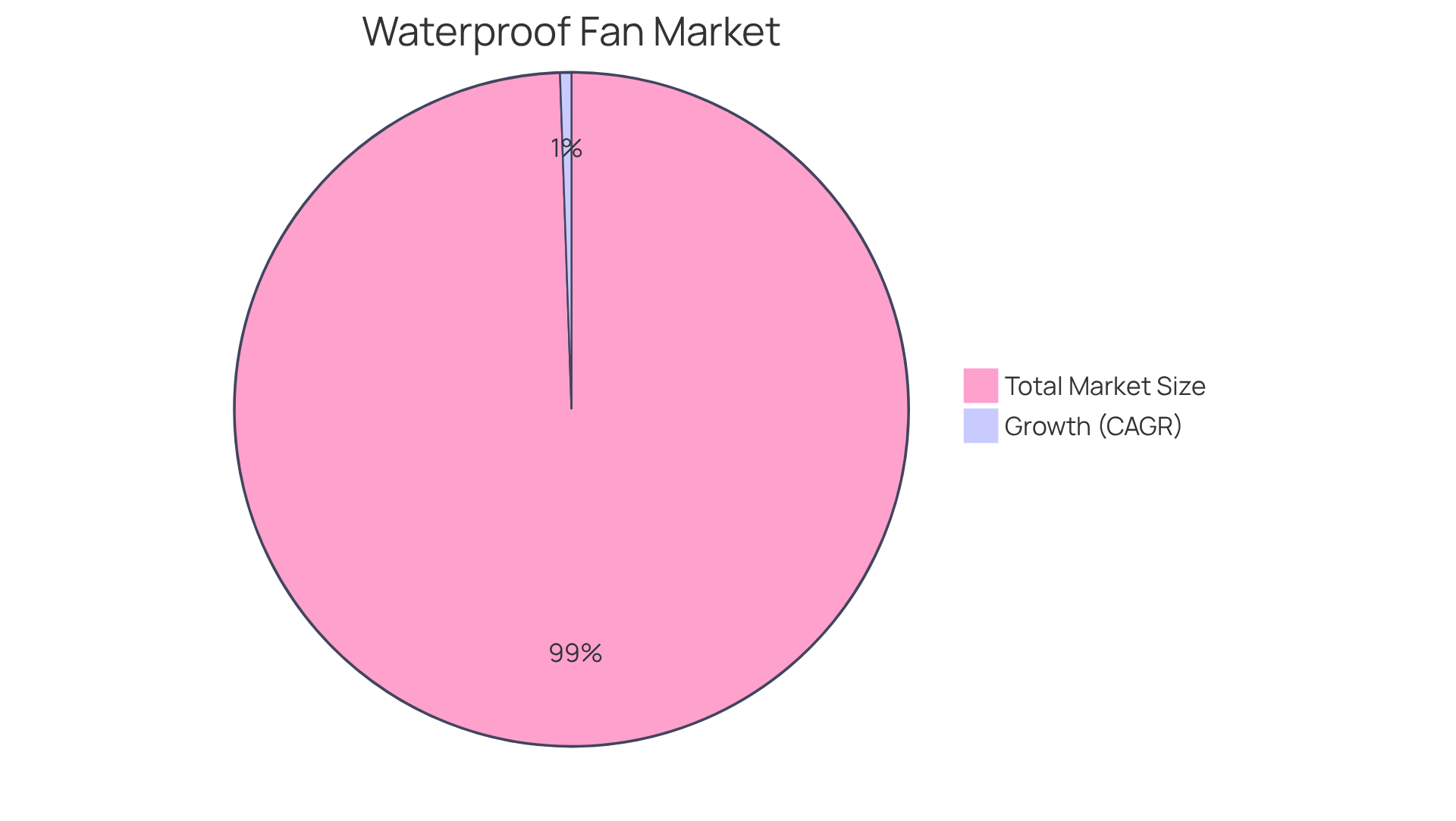
IP68 Rating: Ensuring Maximum Protection Against Water and Dust
The IP68 rating signifies that a waterproof fan is entirely shielded against dust ingress and can endure continuous immersion in water beyond 1 meter. This level of protection is crucial for applications in industries such as marine, agriculture, and outdoor electronics, where a waterproof computer fan is necessary to combat exposure to moisture and debris. Engineers must prioritize IP68-rated devices to guarantee optimal performance and durability in demanding environments.
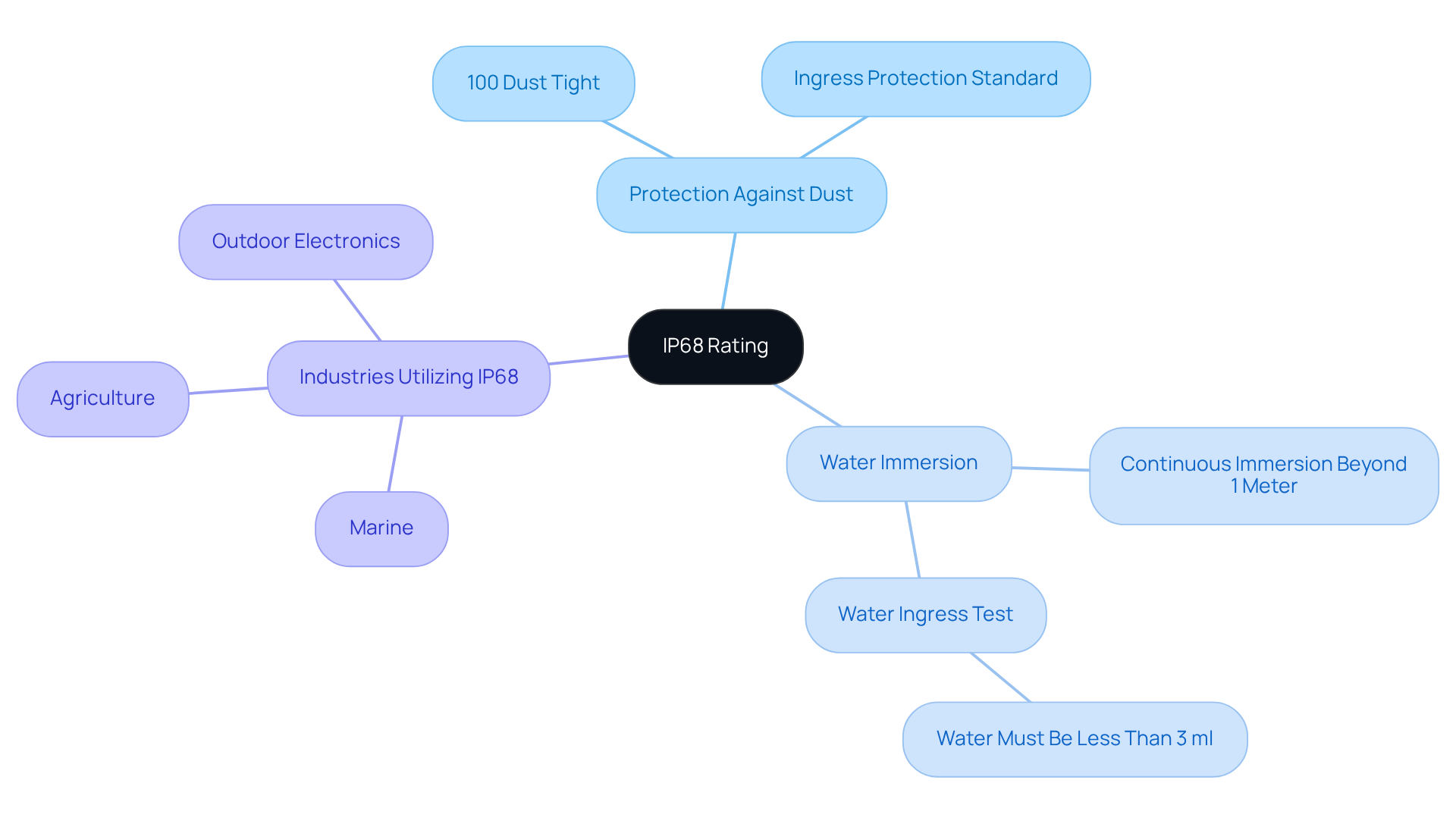
Fan Size and Airflow Capacity: Key Factors for Optimal Cooling Performance
Choosing a waterproof computer fan necessitates a meticulous evaluation of both size and airflow capacity, typically quantified in cubic feet per minute (CFM). Larger blowers excel at moving substantial volumes of air, a critical factor for effective cooling in high-performance applications. For example, exhaust units generally range from 50 to 500 CFM, providing a valuable benchmark for engineers.
However, it is important to note that larger blowers may demand more energy and occupy more physical space, potentially limiting their use in compact electronic designs. Conversely, smaller devices often exhibit greater energy efficiency, yet they may not deliver adequate temperature regulation for demanding systems. Engineers must thoroughly assess the specific cooling requirements of their applications to determine the optimal fan size and airflow capacity.
A case in point: a 60-inch unit capable of exceeding 6,000 CFM is ideal for expansive areas, while smaller setups necessitate devices with a CFM rating specifically tailored to their unique airflow demands. Furthermore, understanding the airflow rating techniques as outlined in 10 CFR 430 Appendix U can significantly enhance the credibility of discussions surrounding airflow capacity and fan efficiency.
Noise characteristics also play a crucial role; higher fan speeds typically correlate with increased noise levels, which can impact user satisfaction. Ultimately, grasping how airflow capacity influences the selection of a waterproof computer fan is vital for ensuring reliable operation in electronic systems. Additionally, the cooling effect associated with the minimum permitted blade height (1.7 °C) illustrates the influence of fan size on cooling efficiency in electronics, while variations in air speed within a space represent a critical design consideration for engineers.
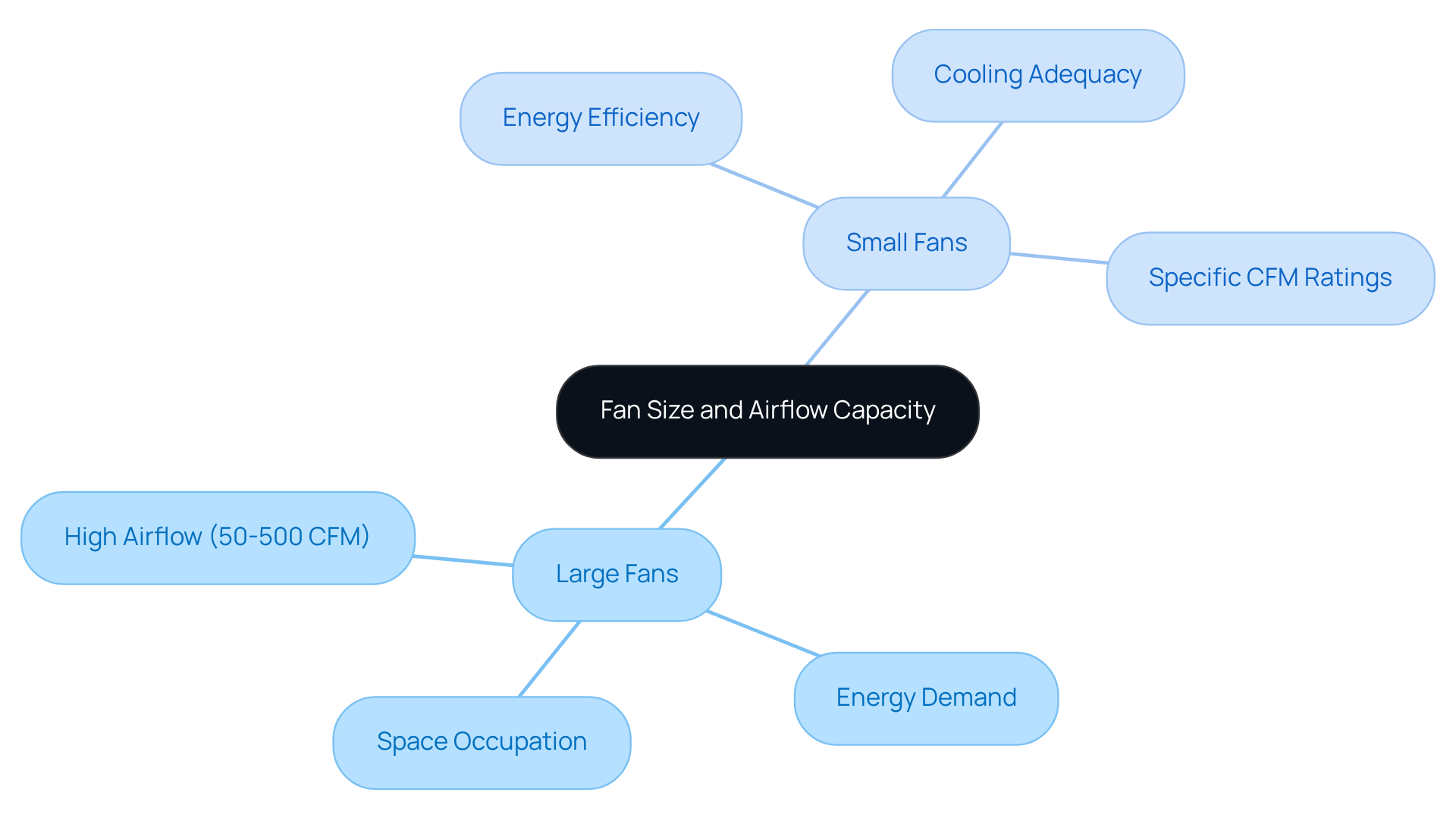
Noise Levels: Balancing Performance with Quiet Operation
When selecting a waterproof computer fan, engineers must prioritize noise levels, particularly in residential and office environments where silent operation is essential. Numerous manufacturers have developed devices that incorporate advanced noise reduction technologies, including optimized blade designs and vibration damping systems. Quiet devices typically operate at noise levels as low as 10-20 dBA, significantly quieter than conventional models that often exceed 40 dB. This reduction in noise not only enhances user comfort but also fosters a more productive environment.
As Sam Pelonis noted, “The bottom line is that the right fan for you will depend on your specific needs.” By choosing devices with lower decibel ratings and understanding the technological advancements behind them, such as aerodynamic blade design, engineers can ensure effective temperature regulation in their systems by using a waterproof computer fan without sacrificing the tranquility of the space.
Recent innovations in fan technology continue to push the boundaries of quiet operation, facilitating the discovery of solutions that satisfy both cooling and acoustic requirements. Case studies have demonstrated that low-noise industrial ceiling devices deliver effective airflow without contributing to noise pollution, further underscoring the benefits of selecting the appropriate model for diverse applications.
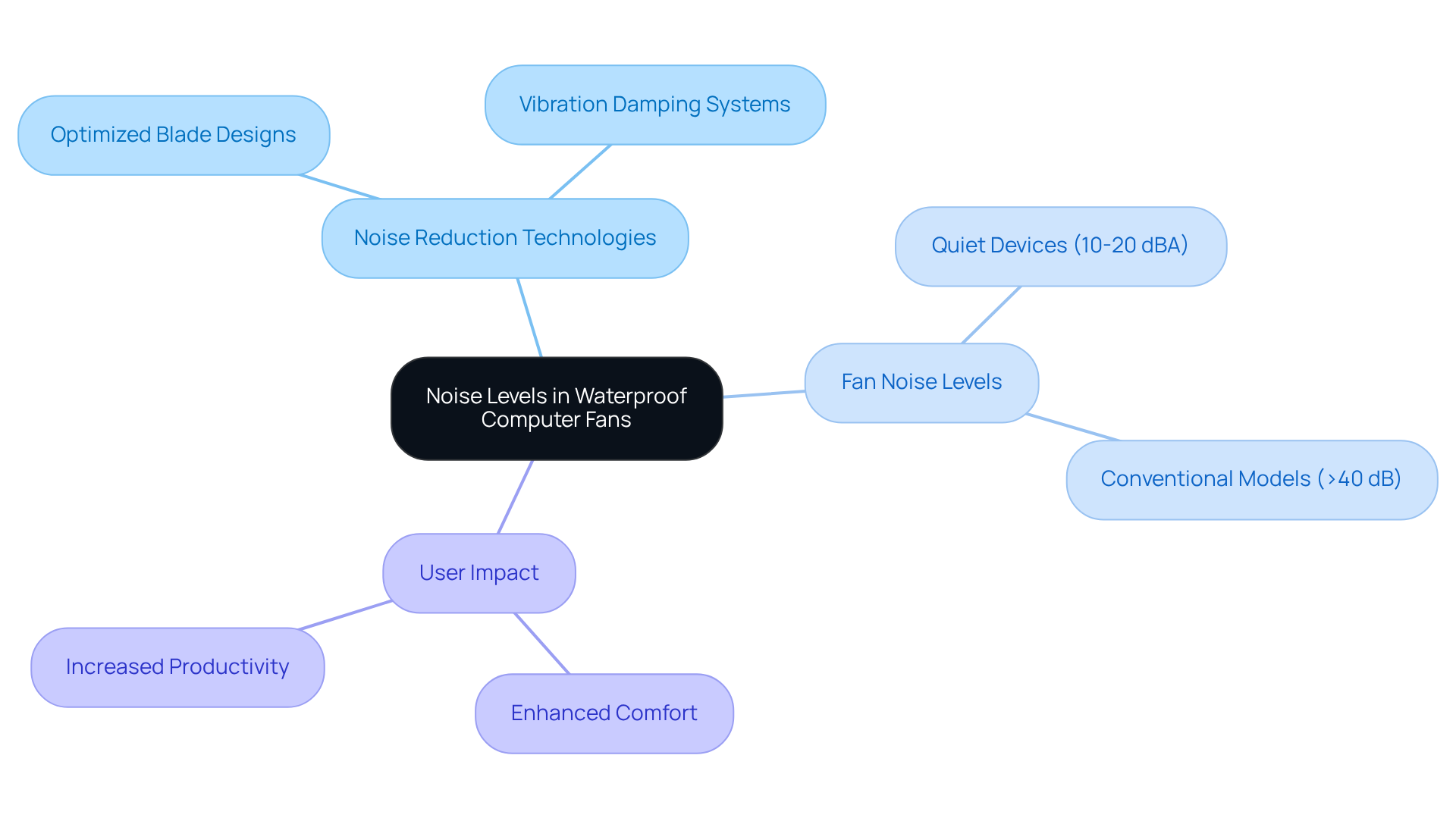
Durable Materials: Enhancing Longevity and Reliability of Waterproof Fans
Durability stands as a pivotal factor in the performance of a waterproof computer fan. Fans constructed from high-quality materials, such as reinforced plastics or corrosion-resistant metals, are inherently better equipped to endure harsh environmental conditions. Engineers must prioritize devices like a waterproof computer fan that utilize these durable materials to significantly enhance longevity and reliability, especially in applications subjected to moisture, dust, and extreme temperatures. By focusing on the selection of robust materials, professionals can ensure that their designs not only meet but exceed the demands of challenging environments.
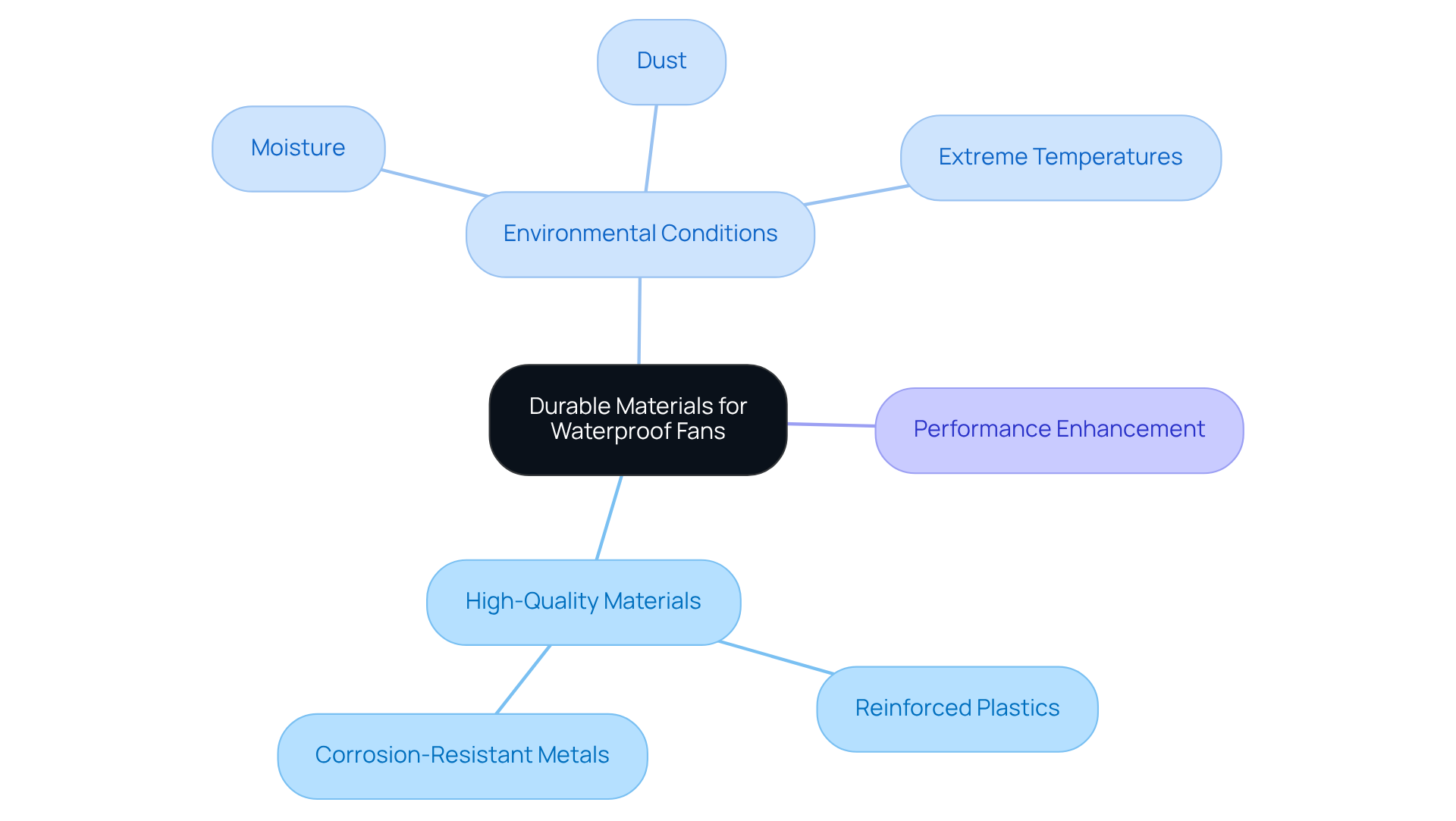
Energy Efficiency: Reducing Power Consumption in Waterproof Fans
Energy efficiency stands as a pivotal consideration for engineers when selecting a waterproof computer fan. Fans that incorporate energy-efficient technologies—such as brushless motors and variable speed controls—can realize significant reductions in power consumption. For example, energy-efficient devices can consume up to 60% less power compared to conventional models, leading to considerable savings on operational expenses.
When a fan operates for four hours daily, it can result in over 70 kWh of electricity usage in a month, translating to approximately $7 on an average U.S. utility bill. Furthermore, brushless motors enhance efficiency by providing superior airflow while consuming less energy, making them ideal for applications that require reliable temperature management.
As HVAC industry experts assert, “EC fans offer superior performance along with lower energy consumption when compared to traditional AC fan motors.” The integration of variable speed controls facilitates adjustments based on cooling demand, further optimizing energy use, particularly since higher fan speeds necessitate increased energy consumption.
By opting for these advanced fan technologies, professionals not only reduce their energy expenses but also contribute to environmental sustainability through decreased overall energy usage.
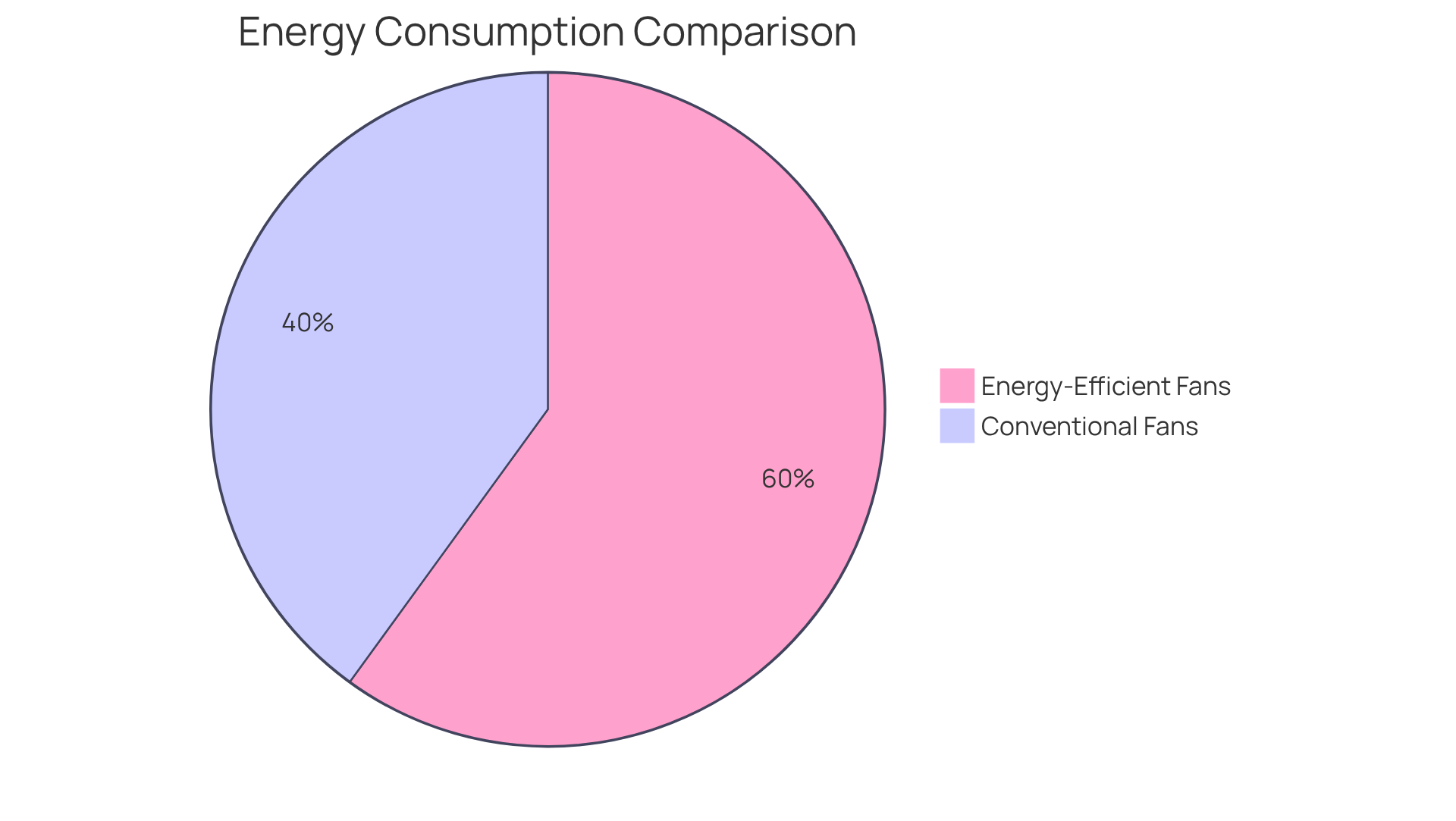
Ease of Installation and Maintenance: Streamlining User Experience
Selecting a waterproof computer fan with user-friendly characteristics significantly enhances the setup and upkeep experience for professionals. The modular designs facilitate straightforward assembly, while clear installation instructions effectively reduce setup time. Moreover, maintenance-friendly designs, featuring accessible points for routine upkeep, are crucial for minimizing downtime. Statistics reveal that regular upkeep of waterproof computer fans can extend their lifespan and ensure optimal performance, with recommended checks every six months. Engineers have observed that these thoughtful design elements not only streamline the installation process but also enhance overall user satisfaction, enabling systems to remain operational with minimal effort. As one technician aptly stated, ‘The simplicity of setup and upkeep is transformative; it enables us to concentrate on our projects instead of resolving fan problems.’ Furthermore, adopting the latest maintenance practices—such as utilizing quick-release mechanisms and standardized components—can significantly reduce the time spent on upkeep.
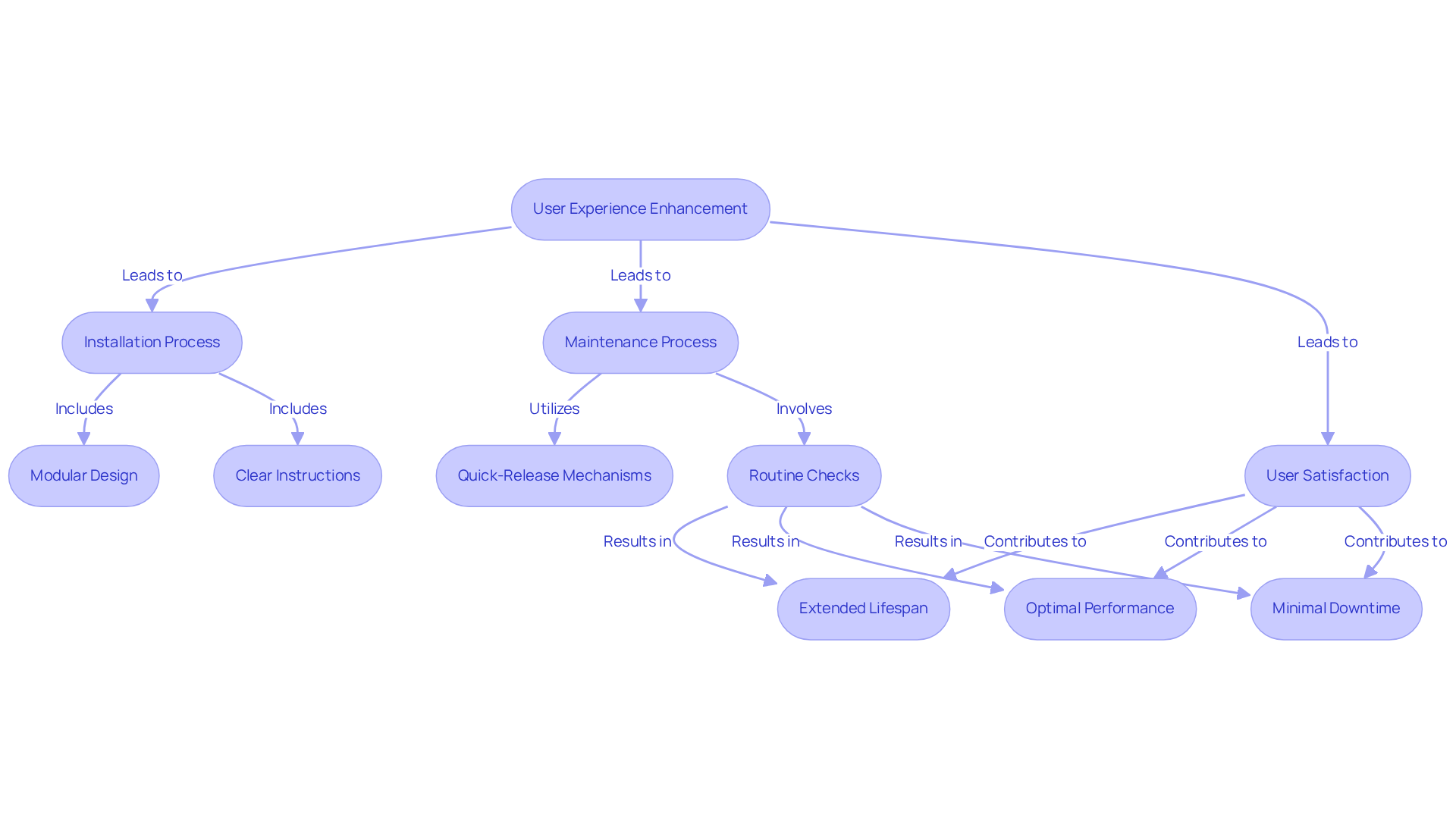
Customizable Features: Tailoring Waterproof Fans to Specific Applications
Customizable features in waterproof fans empower engineers to tailor solutions that effectively meet specific application requirements. Options such as adjustable speed settings and various mounting configurations enhance flexibility, allowing for optimized functionality across diverse environments. For instance, customized airflow patterns can significantly improve temperature regulation in distinct settings, ensuring that systems operate at optimal levels. Manufacturers underscore the importance of customization in fan design, asserting that it directly influences overall effectiveness and reliability. By exploring these adjustable solutions, technicians can ensure their temperature regulation systems are accurately aligned with operational requirements, ultimately enhancing efficiency and durability.
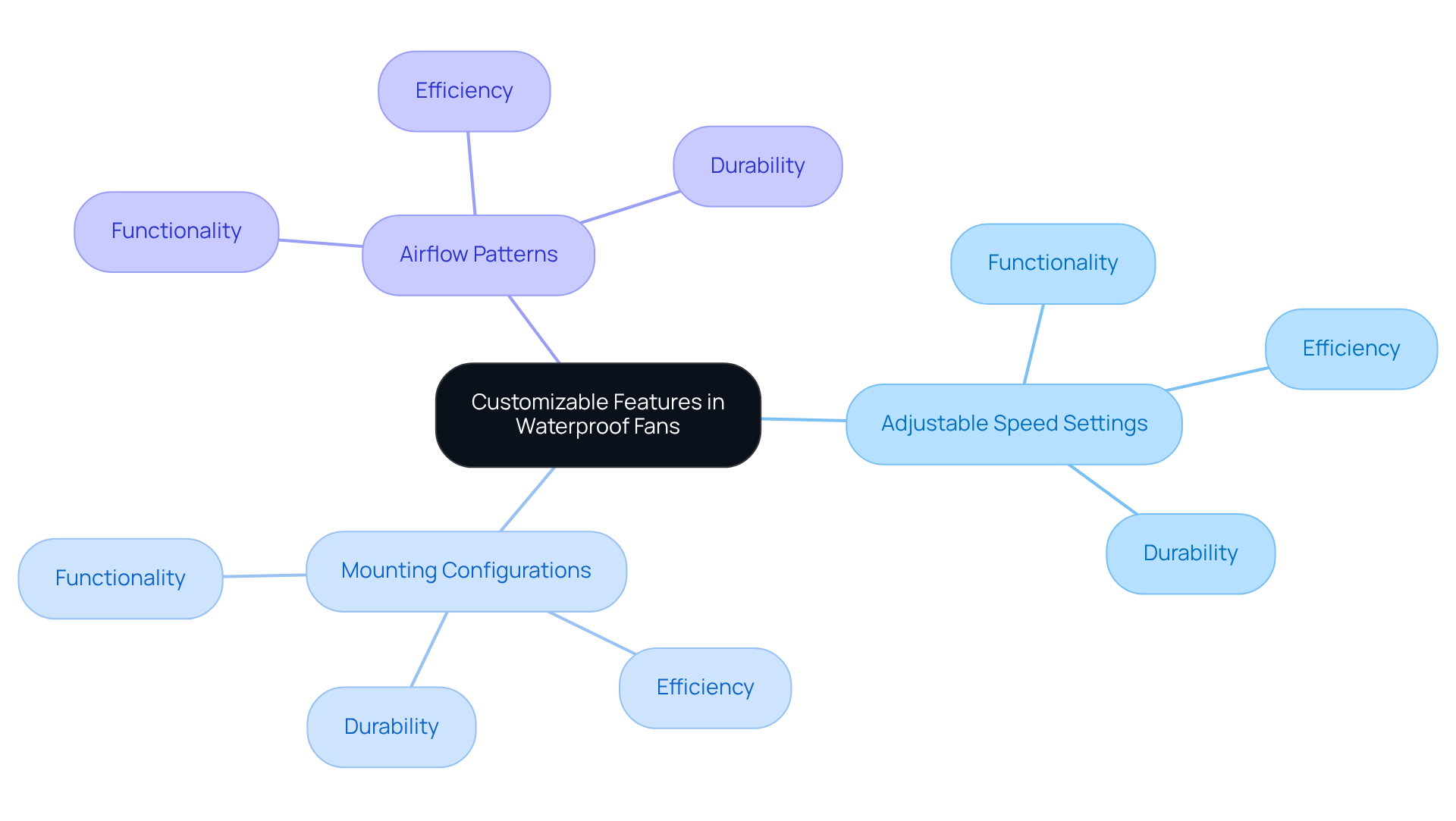
Manufacturer Support and Warranty: Ensuring Reliability and Trust
When selecting waterproof ventilators, it is essential for professionals to consider the extent of manufacturer assistance and the warranty offered. A robust warranty not only provides peace of mind but also ensures that any defects or issues are addressed promptly. Furthermore, manufacturers that offer extensive technical support can assist engineers in diagnosing problems and enhancing fan functionality, ultimately increasing the reliability of the cooling solution. This combination of warranty and technical assistance is crucial for ensuring optimal performance and longevity in demanding environments.
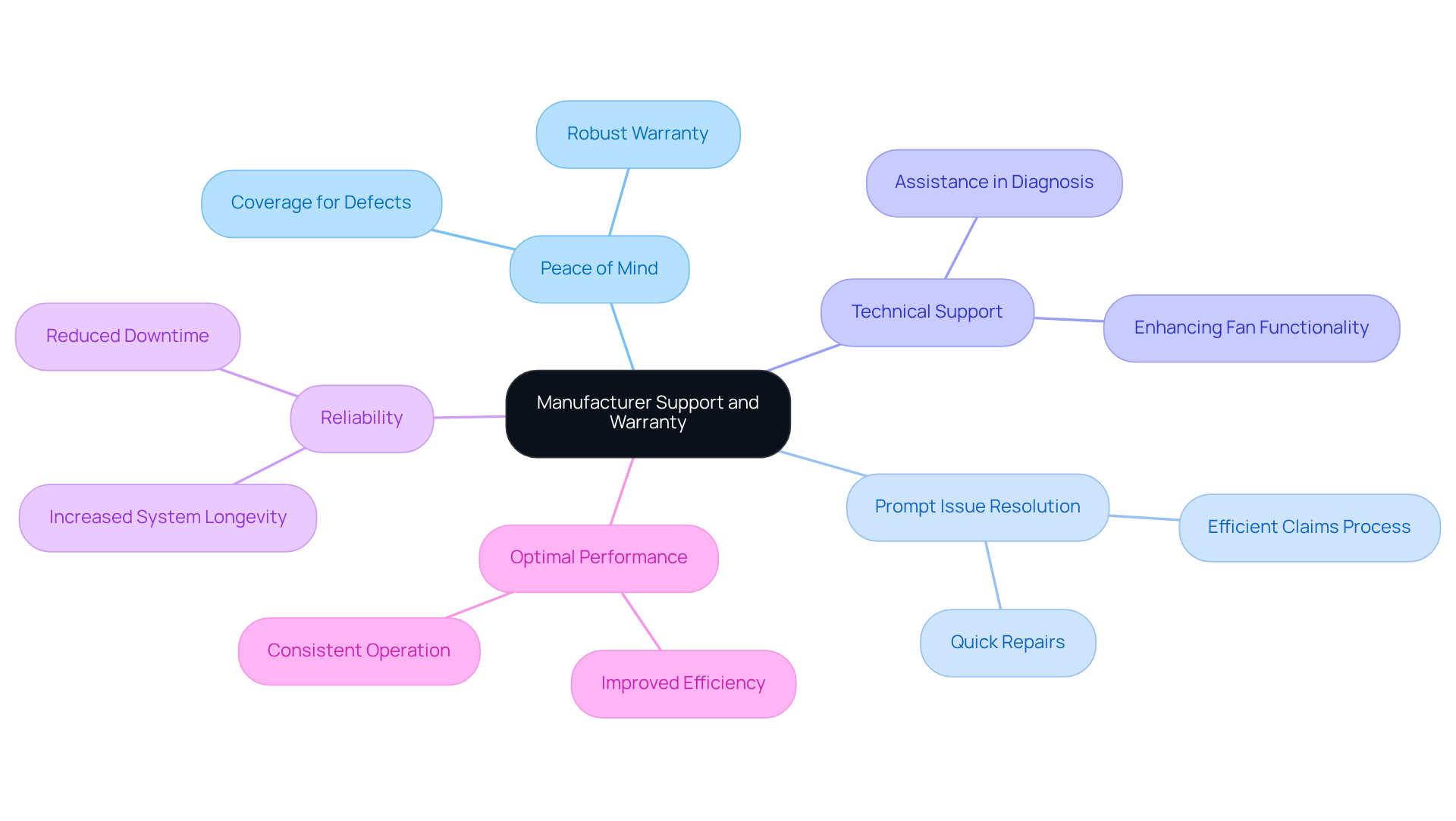
Compatibility with Existing Systems: Ensuring Seamless Integration
Ensuring compatibility of waterproof units with existing systems is essential for seamless integration. Engineers must evaluate critical factors such as:
- Voltage requirements
- Connector types
- Physical dimensions
to prevent installation issues. Selecting fans that meet the specifications of current systems not only streamlines the integration process but also optimizes overall system performance. Gagner-Toomey Associates plays a crucial role in linking professionals with a dependable network of local distributors, ensuring a stable supply of components when and where they are needed.
Notably, 25% of executives report that inadequate integrations can hinder operational efficiency, underscoring the importance of thorough compatibility assessments. As Dean Kamen aptly states, technical professionals solve the world’s problems using math, science, and technology, making it essential to address integration challenges effectively. Furthermore, a significant percentage of engineers face integration challenges with cooling solutions, highlighting the need for meticulous planning and execution in selecting components like a waterproof computer fan.
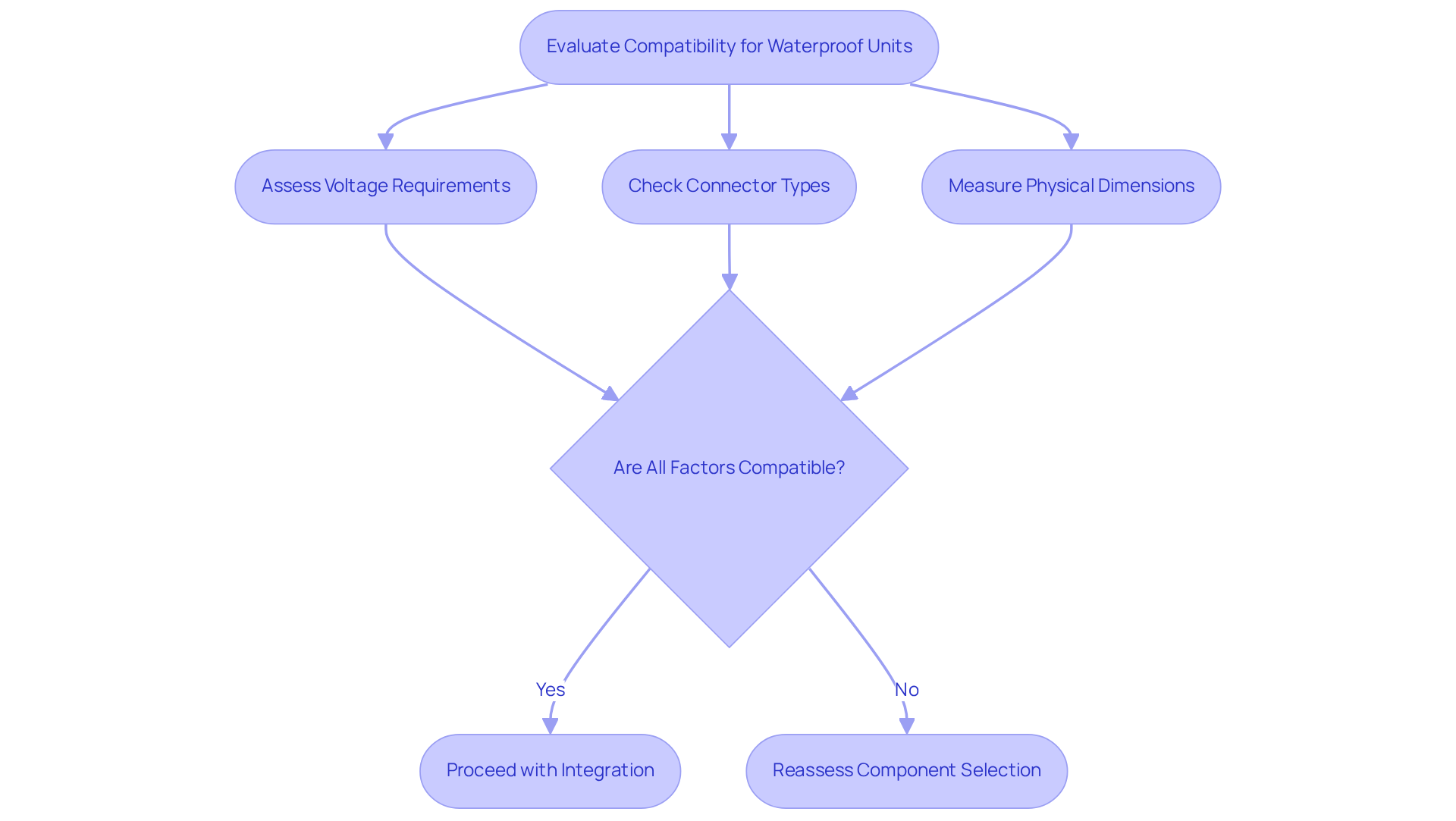
Conclusion
The significance of waterproof computer fans is paramount, particularly for engineers responsible for ensuring the reliability and efficiency of electronic systems. These fans are engineered to endure harsh environments, delivering essential cooling solutions that safeguard sensitive equipment from moisture and dust. By integrating features such as IP68 ratings, durable materials, and energy efficiency, engineers can select fans that not only meet but exceed the rigorous demands of their applications.
In the course of this discussion, critical factors have emerged in the selection process, including:
- Airflow capacity
- Noise levels
- Ease of installation
A thorough understanding of the relationship between fan size and cooling performance, alongside the importance of noise reduction technologies, empowers engineers to make informed decisions that enhance user satisfaction and operational efficiency. Moreover, the significance of customizable features and robust manufacturer support further highlights the necessity for tailored solutions that align with specific project requirements.
As the market for waterproof fans continues to expand, embracing these essential features will be crucial for engineers aiming to innovate and enhance their cooling systems. By prioritizing reliability, efficiency, and user experience, professionals can ensure that their electronic applications operate at optimal levels, ultimately contributing to the advancement of technology across various industries.
Frequently Asked Questions
What does Gagner-Toomey Associates specialize in?
Gagner-Toomey Associates specializes in delivering advanced cooling solutions tailored for the electronics sector, focusing on waterproof computer fans that address moisture and dust challenges.
What is the projected market growth for waterproof ventilators?
The market for waterproof ventilators is projected to reach USD 1.7 billion by 2033, with a compound annual growth rate (CAGR) of 9.3% from 2026 to 2033.
What recent advancements have been made in waterproof computer fan technology?
Recent advancements include models with enhanced durability and efficiency, such as dual ball bearing construction and high airflow ratings, which help maintain optimal operating temperatures and prevent overheating.
What does the IP68 rating signify for waterproof fans?
The IP68 rating indicates that a waterproof fan is completely protected against dust ingress and can withstand continuous immersion in water beyond 1 meter, crucial for applications in marine, agriculture, and outdoor electronics.
What factors should be considered when choosing a waterproof computer fan?
Key factors include the size of the fan and its airflow capacity, typically measured in cubic feet per minute (CFM). Larger fans can move more air but may require more energy and space, while smaller fans are often more energy-efficient but may not provide sufficient cooling.
How does fan size impact cooling performance in electronics?
Fan size affects cooling performance; larger fans can move substantial volumes of air, which is critical for high-performance applications, while smaller fans may be more energy-efficient but could struggle to regulate temperatures adequately.
What role does noise play in the selection of waterproof computer fans?
Noise characteristics are important as higher fan speeds usually result in increased noise levels, which can affect user satisfaction. Engineers must balance airflow capacity with acceptable noise levels for their applications.
Why is it important for engineers to understand airflow capacity and fan efficiency?
Understanding airflow capacity and fan efficiency helps engineers select the appropriate waterproof computer fan for their specific cooling requirements, ensuring reliable operation in electronic systems.

